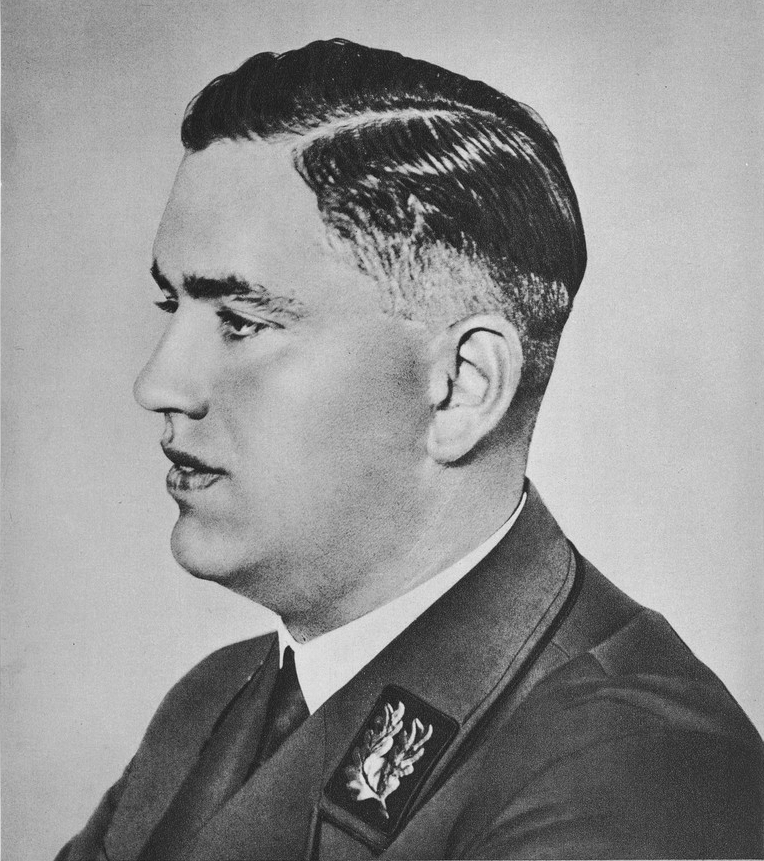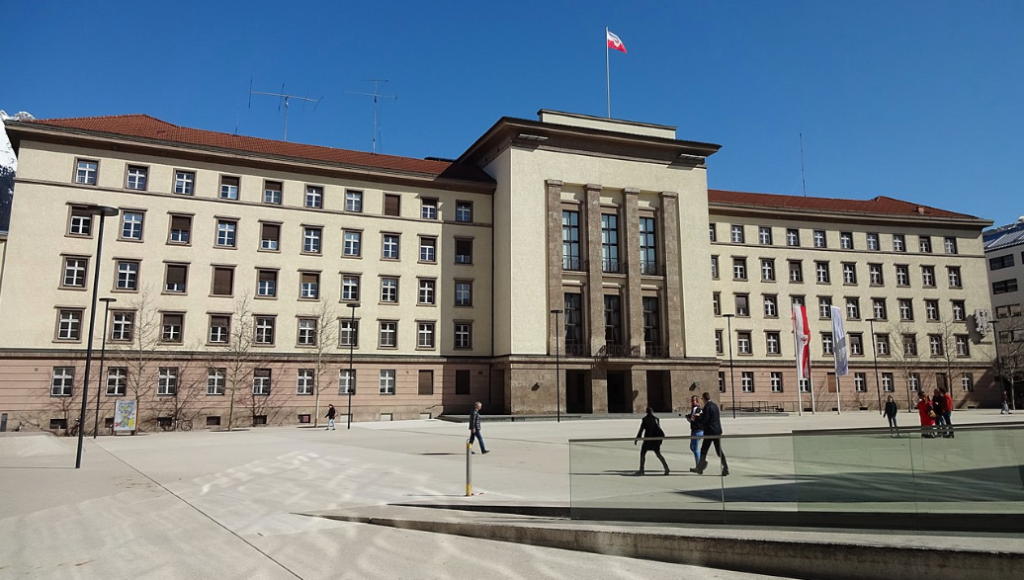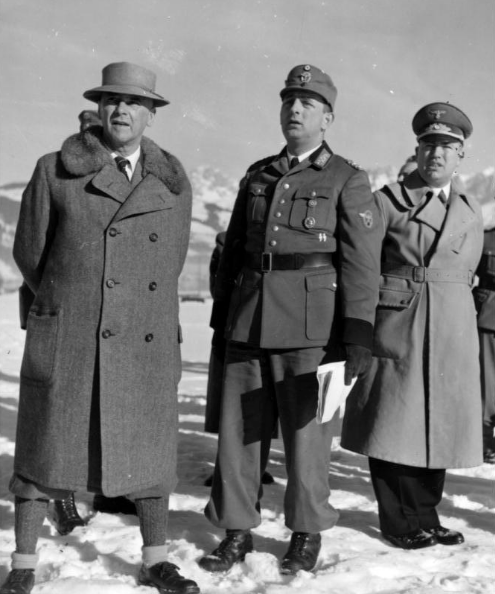Now working on the fourth book in the series (not including the prequel), I am dealing with the events that led the Third Reich and Italy into WWII. At the end of Part 3 (Bolzano), my protagonist, Annamarie Steinhauser, the daughter of Angelo Grimani and Katharina Steinhauser, travels to Innsbruck and “finds her tribe”. Picking up this story in Part 4, she crosses paths with some of the movers and shakers within the Nazi Party. I needed a new character, an antagonist, and someone who would play a big enough role that they would influence her decisions.

When doing this, I look for real key figures that help propel the historical within the fiction. For Annamarie’s story, I specifically needed someone who would hurl her into the middle of Nazi events in Tyrol, Austria. I chose Franz Hofer without really knowing how serendipitous it would become.
When I dove into the research, with great excitement I realized that he could connect all the dots in a book that will wrap up the Katharina Steinhauser-Angelo Grimani saga. And to an author, there is nothing more exciting than stumbling on such a juicy and rich circumstance. In other words, Gauleiter Franz Hofer made my day.
Born to a Bad Hofgastein hotelkeeper in Innsbruck, Franz Hofer began a career as a freelance salesman. In September 1931, he joined the NSDAP. He very quickly rose in the Party, becoming District Leader, and that same year Gauleiter* of Tyrol.
Before the annexation of Austria, for his activities in the Nazi Party, which was banned in Austria, Hofer was arrested in June 1933 and sentenced by a Tyrolean court to two years in prison. Four armed SA men broke into Hofer’s prison cell and freed him. He was wounded as he fled the prison but made it to Italy and, only a few weeks later, gave a speech at the Nuremberg Party Congress from his stretcher.

After the Nazis annexed Austria as part of Germany in 1938, they divided the country into regions. Innsbruck became the center of the established Reichsgau Tyrol-Vorarlberg region. As the party grew, they needed a bigger administrative building. The Gauhaus** was built in 1938/1939 during the period of National Socialism as the administrative headquartersfor the newly established Reichsgau Tyrol-Vorarlberg. This is the time when Annamarie is in the city and trying to get her bearings on a new life, a new political landscape, and establishing new relationships, including a romance with Gauleiter Hofer’s driver.
Franz Hofer was appointed administrator—or Gauleiter—of this new region. As the Nazi party chief for Tyrol/Vorarlberg provinces, he was the most powerful figure in the provinces and surrounding area. Hofer was not only the party chief but the Reichskommissar in charge of the Tyrol-Vorarlberg defences. His region embraced much of the suspected National Redoubt***. Indeed, Hofer might well be considered the father of the Redoubt.
After Italy forsook the Axis Powers in 1943, Hofer was chosen to be the Supreme Commissar in the Operation Zone of the Alpine Foothills. The capital of the zone was Bolzano, which means that Hofer will also brush shoulders with Angelo Grimani! Hofer wanted to amalgamate the operation zone to his Gau and thus bring forth the reunification of Tyrol and the territorial resurrection of the old Austrian Crown land of Tyrol.

The Germans resisted and dismantled the Italian influences and decreed the restoration of the provincial borders of 1919 (plus the addition of Belluno, because, you know, why not?).The Nazis also forced the resignation of the ethnic Italian chief magistrates in South Tyrol, who were replaced by German-speaking mayors recruited from the local population, and who identified with the Third Reich.
In September 1943, the German language was given equal status with the Italian language. German and Ladin names of streets and localities were displayed alongside Italian names, and Fascist and Italian-language newspapers were shut down and banned. Furthermore, the Fascist party was outlawed. Laws were introduced limiting the immigration of Italians escaping military service from the Italian Social Republic. The effect of these policies was a rapid and draconian reversal of the stringent policy of Italianization, which had been imposed on the region by the Italian government beginning in the early 1920s.
For anyone who understands the premise of the Reschen Valley series, you will probably be sitting up in your seat right now. Yes, this is the highest forms of irony I could possibly wish for. This is the guy who might have saved the Reschen Valley…had the Germans won the war. Do you have any idea how exciting this kind of information can be for an author? It helps me to connect dots in the 20-year plotline and to tie it all up with the neatest bow ever.
But don’t misunderstand. I’m not celebrating the Nazi’s influences on South Tyrol. The region was the scene of some of the last German atrocities during World War II, including carrying out the feverish extermination of Jews. Towards the end of the war South Tyrol saw the presence of over 70,000 German soldiers and members of the police, ready for a possible last defence. After the German surrender in Italy, celebrations of the Italian-speaking population broke out which saw 11 people killed in Merano on 30 April, and 41 people killed in Bolzano on 3 May 1945, when Wehrmacht and SS units fired on civilians. This and the ongoing encounters between German troops and Italian partisans have been referred to as the Battle of Bolzano. Blame for these killings has been laid on SS and police leader Karl Brunner, but also on the chaotic circumstances on both the Italian and German side following the surrender.
On May 3, 1945, Hofer surrendered to American troops. It was not long before Hofer’s freedom was curtailed. On 6 May 1945, he was arrested by the United States Army in Hall in Tirol and held in an internment camp. In 1948, he managed to flee to Germany. Hofer spent his later years in Mulheim an der Ruhr with his wife and seven children, continued his former trade as a salesman and died a natural death on February 18, 1975, under his real name.
*A Gauleiter was the party leader of a regional branch of the Nazi Party—the second highest Nazi Party paramilitary rank and subordinate only to the higher rank Reichsleiter and to the position of Führer. During World War II, the rank of Gauleiter was obtained only by direct appointment from Adolf Hitler.
**The Gauhaus is now called the Neue Landhaus and is used by the Tyrolean state parliament.
***A national redoubt or national fortress is an area to which the (remnant) forces of a nation can be withdrawn if the main battle has been lost, or even earlier if defeat is considered inevitable.
Get the Box Set Season 1: 1920 – 1924



